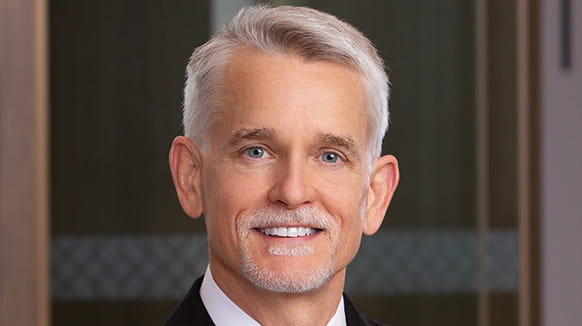The Second Circuit issued an important decision recently in In re Sanofi Securities Litigation applying the Supreme Court’s landmark Omnicare decision. In Omnicare, the Supreme Court held that a statement of opinion, even if honestly believed, could be actionable if the issuer failed to disclose material facts that conflict with what a reasonable investor would, in context, expect about the issuer’s basis for the opinion. In Sanofi, the Second Circuit emphasized that a reasonable investor should not expect an issuer to disclose every fact that might undermine or conflict with the opinion expressed. Shareholder plaintiffs who challenge opinions under an omissions theory must identify particular omitted facts showing that the opinion did not fairly align with information in the issuer’s possession. The Second Circuit’s analysis in Sanofi reinforces the Supreme Court’s admonition that showing an opinion is misleading due to alleged omissions “is no small task for an investor.”
Background and Procedural History
At issue in Sanofi were statements of opinion or belief related to the clinical testing of the drug Lemtrada. In certain offering materials, the defendant company and its management stated their expectation that the FDA would approve Lemtrada by a specific date. The defendants also expressed optimism about the status of Lemtrada’s clinical testing. The FDA subsequently released briefing materials questioning the company’s use of single-blind (rather than double-blind) clinical studies, and shortly thereafter the FDA formally rejected Lemtrada for use in the United States. Although Lemtrada later received FDA approval, shareholder plaintiffs had already filed suits challenging the company’s opinions under both the Securities Act and the Exchange Act.
The plaintiffs in Sanofi claimed that the company’s opinions were materially misleading because the company allegedly failed to disclose that the FDA had expressed concern to the company about the use of single-blind studies. The district court granted the defendants’ motion to dismiss, applying the Second Circuit’s pre-Omnicare standard for evaluating allegedly misleading statements of opinion.
Soon after the district court’s decision, the Supreme Court decided Omnicare Inc. v. Laborers District Council Construction Industry Pension Fund, 135 S.Ct. 1318 (2015), which set forth a new framework for analyzing statements of opinion or belief under the securities laws. Under Omnicare, a statement of opinion or belief may be misleading if (1) the speaker does not genuinely believe it; or (2) the speaker omits material information such that the opinion or belief becomes misleading to a reasonable investor. On appeal, plaintiffs urged the Second Circuit to reconsider the district court’s ruling in light of Omnicare’s holdings.
The Second Circuit Emphasizes Omnicare’s Burden on Shareholder Plaintiffs
Applying Omnicare, the Second Circuit agreed with the district court that the shareholder plaintiffs failed to allege a materially misleading statement of opinion. Since more securities fraud suits are filed in the Second Circuit than any other circuit, the Second Circuit’s application of Omnicare and reasoning should guide other courts tasked with analyzing challenged statements of opinion or belief.
The Sanofi Court recognized that Omnicare sets a high pleading standard that is “no small task for an investor” to meet. The Sanofi Court also cautioned that Omnicare does not impose on issuers “an obligation to disclose every piece of information in their possession.” While Omnicare states that investors expect that an issuer’s opinion “fairly aligns” with information in the issuer’s possession, Sanofi points out that opinions are often premised on sets of competing facts. For that reason, statements of opinion are “not necessarily misleading when an issuer knows, but fails to disclose, some fact cutting the other way,” and shareholder plaintiffs cannot invoke Omnicare’s framework simply by identifying omitted facts in their complaint. Rather, plaintiffs must show how those omitted facts “conflict with what a reasonable investor would take from the statement itself.”
The Second Circuit also emphasized that opinions must be evaluated in their proper context. This includes any “hedges, disclaimers, and apparently conflicting information,” as well as “the customs and practice of the relevant industry.” Under the Second Circuit’s Omnicare analysis, statements of opinion should be analyzed not in a “vacuum” but in their “broader frame” to determine whether an omitted fact rendered the opinion misleading.
Applying this framework to the opinions at issue, the Sanofi Court held that plaintiffs failed to state a claim under the federal securities laws. For example, plaintiffs argued that the company’s statements of optimism about Lemtrada’s prospects for FDA approval were misleading because the company failed to disclose interim feedback from the FDA expressing concern with single-blind testing. The Sanofi Court noted that this feedback also indicated that Lemtrada could be approved with single-blind testing, so the company’s optimism was consistent with the alleged omissions. Further, the Court noted that a reasonable investor, familiar with the customs of the drug industry, would expect regular dialogue with the FDA as part of the approval process. Such dialogue would not prohibit the company from expressing optimism, particularly in light of the hedges and disclaimers included in the offering materials. The Court also noted that for many years the FDA has publicly expressed its preference for double-blind testing. Within this proper context, the Court concluded that no reasonable investor would have been misled by the company’s optimistic statements.
Takeaways
Sanofi is undoubtedly a victory for issuers and securities litigation defendants. While Omnicare allows shareholder plaintiffs to challenge statements of opinion and belief under an omissions theory, Sanofi makes clear that such claims are difficult to plead and vulnerable to motions to dismiss. It will not be sufficient for plaintiffs to identify an undisclosed fact that might undermine or conflict with the opinion expressed by the defendant. The test for whether an opinion is misleading is far more contextual and difficult for a plaintiff to meet.
Second, while Omnicare involved only Securities Act claims, the Sanofi court did not limit its omissions analysis to the plaintiffs’ Securities Act claims. As many district courts have done, the Second Circuit applied Omnicare’s holdings to the plaintiffs’ Rule 10b-5 and Exchange Act claims. We expect this trend to continue, so issuers should remember Omnicare’s guidance for statements of opinion and belief even when a public offering is not being contemplated.
For additional information, please contact one of the Haynes and Boone attorneys listed below:

